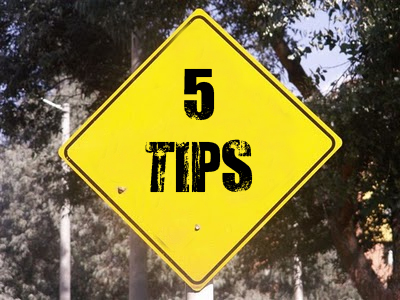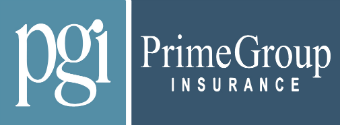
When a significant homeowner property loss occurs, the adjuster is keenly aware of the insureds’ desire to return to their home quickly after the reconstruction. It is also in the best interest of the carrier for the claim to move along in an expeditious manner in order to provide high levels of customer service and control costs such as additional living expenses.
Losses involving large commercial properties are often very complex, and the adjuster must be well versed in a variety of perils including building fires, explosions, collapses, water damage, mold, and equipment and machinery malfunction. Often, commercial properties involve tenant issues and exposures in addition to the insured’s real property loss. Again, the adjuster is trained to handle the claim in a professional and expeditious manner to satisfy the policyholder and minimize the claim for business interruption.
Most subrogation professionals will agree property losses can pose unique challenges for a successful recovery. Very often, expeditious claims handling can have a negative impact on a subrogation opportunity if the adjuster is moving quickly to bring the loss to a conclusion and forgetting about potential recovery opportunities. A good practice would be for the property adjuster to place a subrogation indicator on any file having even the remotest subrogation potential. The adjuster should alert the subrogation department to jump into the claim from a recovery perspective as it is best to get involved early in the claims process to gather and protect critical information and evidence. Best case scenario would be for both the claim adjuster and the subrogation adjuster to develop a strategic relationship which will not only keep the customer happy but will preserve the carrier’s right to a successful recovery, should one exist. These five basic practices can assist an insurer in capturing more of their paid claims dollars:
1. Keep an eye out for recovery:
While every company looks to mitigate their exposure to be sure only what is owed is paid, mitigating exposure can also mean conducting or directing field scene investigations with an eye towards subrogation — whether the company is utilizing staff adjusters or has engaged an independent adjusting company to do so. The field adjuster has the best opportunity to ask questions and document third-party potential.
Consider the situation where the damages were caused by a unit owner above the insured property. How easy would it be for the field adjuster to obtain the name of that potential third party and possibly knock on the door to ask a few questions like, “What happened?” “How old was the toilet?” “Who was the contractor hired to do your renovation?” “What was the name of the service you hired to winterize your unit while you were in Florida?” “Has your insurance carrier been by to inspect your damages?” “By the way, who might your carrier be?”
While they can certainly refuse to answer any questions, it is unlikely much information will be obtained by not asking any questions at all. The “good neighbor policy” occurs when a fire or water loss occurs in a neighboring unit or home, and it is key to commence contact immediately with the carrier for the other home. All too often there is no communication and the other party’s representative may be un-cooperative or unaware of any damage when presented with a subrogation claim, which may jeopardize a successful recovery.
2. Preserve the evidence:
The old expression “save the toaster” should be taken seriously! Too many times, recovery efforts are thwarted by a policyholder who can’t wait to dispose of all those old parts, or absolutely needs to have that hot water heater removed as soon as possible. We cannot expect policyholders to fully understand subrogation or the value of preserving evidence. It is clearly up to the insurance professional to educate the policyholders and provide them with a reason for cooperating and letting them know that if there is any hope of recovering their deductible, the company needs to retain the evidence and have it tested to prove negligent installation or manufacturing.
It may be beneficial for the field adjuster or independent adjuster to pick up the evidence (if possible) while at the scene. Having the evidence in one’s possession is usually better than trusting the insured to preserve it, since so many homeowners are more apt to toss it out. Evidence retention is especially critical in losses which occurred from a faulty product. Avoid spoliation (the destruction of evidence)! All adjusters investigating fire and explosion losses should be familiar with the NFPA 921: Guide for Fire & Explosion Investigations, which offers information on using the scientific method in origin and cause investigations, handling evidence and documenting the investigation.
3. Hire the right expert:
Hiring the right company/person to conduct the examination or investigation of the faulty product and to make sure the manufacturer’s right to examine the product is preserved, is often as important as the retention itself. Meticulous attention must be paid to the chain of custody to avoid allegations of evidence destruction or tampering. This includes a record of how the evidence is stored, preserved and given to the expert to conduct their investigation. The best scenario may be one where the evidence is examined simultaneously by the expert for the insurer and the manufacturer. Joint inspections save time and money, and can usually get the case settled quickly.
4. Cause & origin:
Too many times a theory of liability is just that — a hunch. A cause and origin expert can help explore that hunch in cases that warrant further investigation. In order to establish a solid subrogation case, it will be necessary to have an expert who has multidisciplinary capabilities and can utilize fire science, engineering and chemistry to determine cause and origin. Strong consideration for this type of referral should be given to electrical fires, appliance fires and spontaneous ignition incidents to establish and confirm third-party negligence and/or product failure.
5. Early intervention:
First notice of loss (FNOL) outsourcing? Develop an in-house program or consider FNOL services with a reputable subrogation services provider to identify potential subrogation on cases even before any payment has been made. Determining cause and origin and being able to prove a theory of negligence must start as early as possible. Look for subrogation vendors that use sophisticated methods of data extraction and OCR (optical character recognition), enabling them to commence subrogation activities before the claim is actually paid by the carrier.
Too often subrogation is relegated to later on in the claims process, after the scene has been compromised and important clues as to cause and origin have been removed. On complex claims, smart property adjusters recognize the value of identifying subrogation possibilities early, so everyone wins.
Source: PROPERTYCASUALTY360.COM
